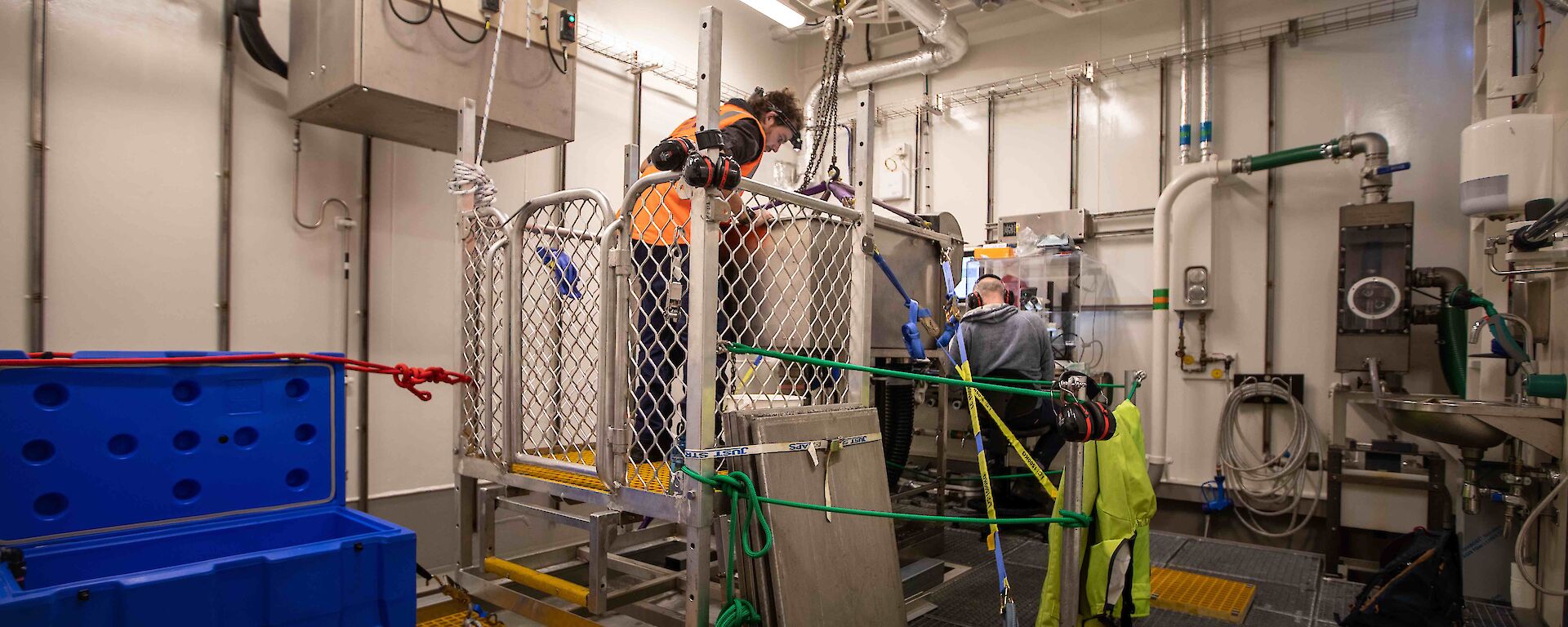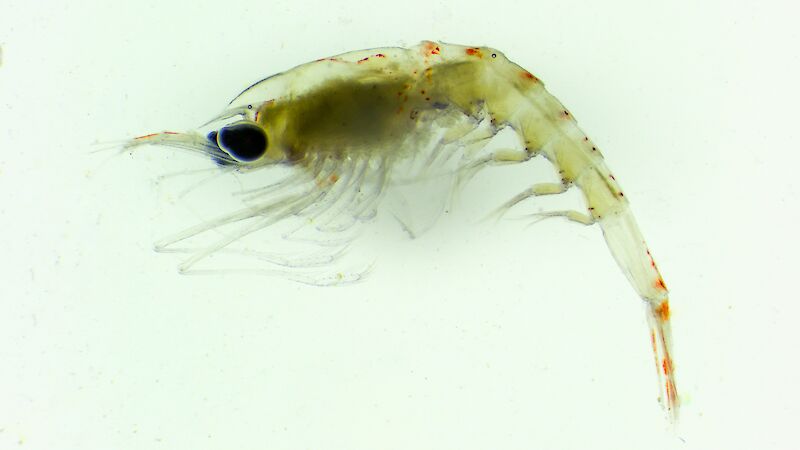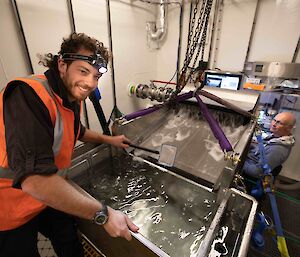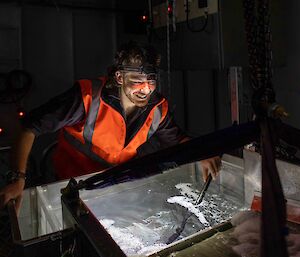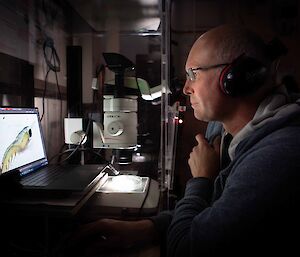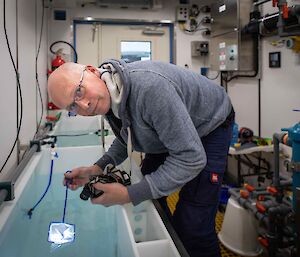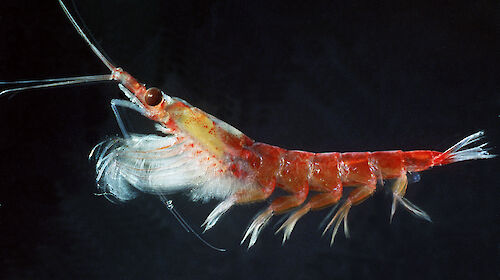Growing up to 30 millimetres in size, Thysanoessa are about half the size of Antarctic krill, Euphausia superba, which occur closer to the continent.
The pair also caught a range of more fragile animals, such as soft bodied salps (jelly-like planktonic sea squirts) and polychaetes (bristle worms).
“This was the first test of the wet well in Antarctic waters and we caught animals as soon as we started up the water filtration system,” Mr King said.
“It demonstrates that we can catch krill without slowing or stopping the ship, which means, weather permitting, we could potentially catch krill 24/7.”
Unique wet well
The wet well is a watertight room deep inside the ship connected to inlets in the hull that allow water to gravity-feed into the room and across a filter table at about 2000 litres per minute.
The filter table is still in a prototype format for testing on Nuyina’s first voyage south, but future models will have a viewing chamber to allow the operator to remove fragile organisms like salps, using a hand net, before they may be damaged on the filter table.
In the past, krill have been caught using a trawl net with a small ‘cod end’ – a tube that provided some protection for krill from being damaged by the net and any excess catch. However, this method was never ideal.
“The best animals to conduct experiments on physiology, reproduction or behaviour, are those that are freshly caught and in perfect condition, so that we can have confidence that our results reflect what actually happens in the wild,” Mr King said.
“The work we do on this voyage will help us determine the best conditions under which to catch krill and other species in the wet well, such as the speed of the ship, the flow rate of water and the mesh size of the filter table.
“We want to ensure that we have the minimal amount of time and disturbance between when we catch the animals and when they end up in experiments or in our on board aquarium.”
Aquarium in a shipping container
The captured krill and other animals are now living in this specially designed containerised aquarium where they will be monitored for their condition and survival.
The aquarium can maintain the water temperature in which the animals were caught, until they are used on board or transferred to the land-based aquarium at the Australian Antarctic Division.
“As well as testing the wet well, this voyage is an opportunity to test our aquarium system to ensure it’s safe for the animals we’re really keen to catch once we pass 60° South – Antarctic krill,” Mr King said.
The specimens will contribute to deepening scientists’ understanding of Antarctic krill and their critical role in the ecosystem, which will strengthen conservation efforts and help ensure Southern Ocean krill fisheries are sustainably managed.

